Ancient rock art is amazing, not so much for the pictures that are formed but more that our ancestors were able to select places and materials to make these stunning stories and descriptions of life so long ago.
The fact that they have lasted is awe-inspiring, and what is sad is that people today take great pleasure in destroying their artwork. Most rock art today is now fenced off and able to be seen only on guided tours. Some you will find in museums and other places that display them. The best way to see rock art is out where it is, and even though we cannot touch these messages from the past, we can still stand and wonder what they were like and why they were created.
9.Thunder caves of rock art

In 2014 a study was begun that discovered a link between some cave art and its location. If a scene depicts a herd of animals charging, the art is often found in caves where it gets very noisy with echoes. In some North American caves, the walls are adorned with Thunderbirds; these caves are very noisy with echo, and it was believed that the beating of a Thunderbird’s wings caused thunder. Upon investigation, remainders of artwork have been found even in caves where rock art had never been found before; probably done there because of the acoustics in those caves.
In the Canadian Shield, there is a myth about rock spirits and sounds that clearly link the idea that cave art is to be found in specially-selected caves known for their sound quality.
8.Paleolithic nativity scene
In 2005 a geologist found inside a small cave in Egypt a roof painting which is being described as a nativity scene. The painting is 3,000 years older than the actual Christmas event.
In the artwork, a child is raised by two parents; there are two animals present, and a star in the east completes the picture.
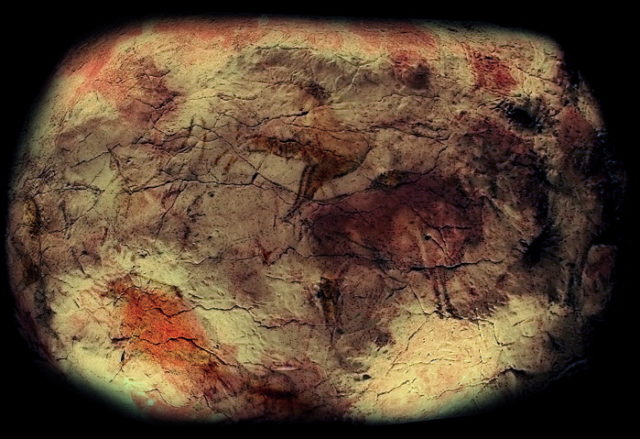
The animals aren’t barnyard animals but wild animals from the era; one is a baboon-like creature and the other a headless lion. The scene was painted in dark red ochre.
7.Wadi Adu Dom Etchings and the rock gongs

In a desert valley in Sudan, 15 sites were discovered by archaeologists in 2011. Their art ranges from single images to some sites having 30 images.
It is clear that this rock art was added to by many artists over time, but the oldest are thought to be about 1,500 years old.
This is the time when Christianity arrived in Sudan, and some of the artwork contains crosses, churches, and well-drawn cattle. There is another batch of artwork there as well that is 5,000 years old. There are coiled spirals and another group that looks like a patterned fishing net. In the same area as all these drawings and etchings are “rock gongs.” These are of an unknown age and ring with a clear sound when hit with a smaller stone. It is thought they would have been used for signaling.
6.Polydactyly rock art
Feet were revered by a Pueblo culture over a thousand year ago in the Chaco Canyon in New Mexico. Here artworks on walls are prints of hands and feet; mainly footprints and sandal prints remain on the walls.
There are also sandals remaining, both real ones and carved ones, for scientists to puzzle over. This group of people had a special physical trait called polydactyly – this is when hands or feet have an extra digit.
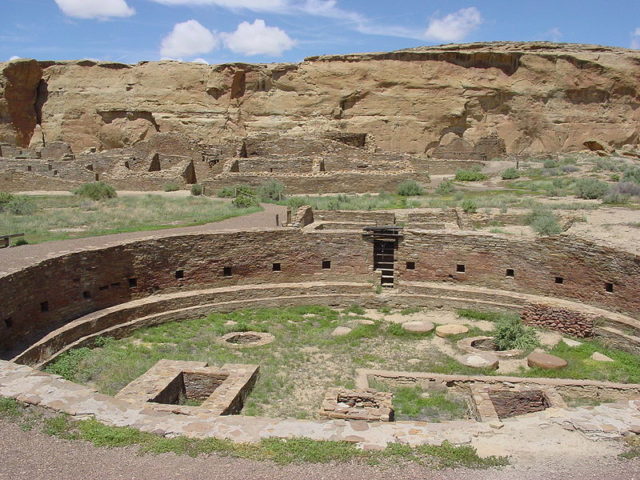
Not everyone in the settlement had the extra digits, but from the skeletal remains, scientists believe that they had the highest percentage of that than any other ethnic group in the area.
5.Cave of the Beasts
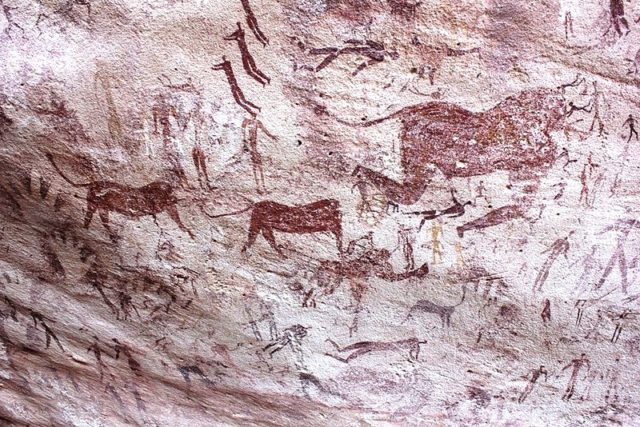
Discovered in 2002 in the Sahara, the Cave of the Beasts is named for the strange headless creatures drawn on the walls. However, it wasn’t those paintings that have made the cave famous but the 13 baby handprints that cover the wall. Some sit inside adult hand prints, and it was noticed that these babies’ hands were unusually small.
The imprints are tinier than a premature baby handprint, and the fingers are unusually long. These 8,000-year-old hand prints are thought not to be human at all and have since been proven to belong to an animal.
Why these small animal prints rest inside a handprint of a human, we will never know, but they were created at the same time using the same pigment.
4.German Venus in Hohle Fels
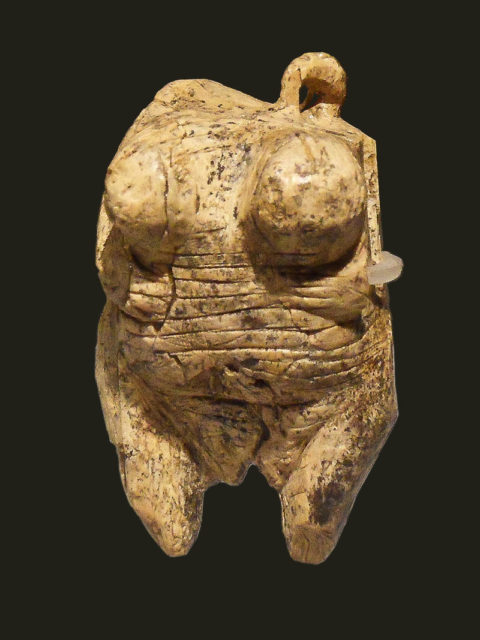
A statue that was found in a cave in Germany has been described light-heartedly as “prehistoric porn”. It is an ivory statue that is 40,000 years old and is one of the oldest human sculptures to have been discovered. It is called the Venus of Hohle Fels and is of a nude female that’s missing her head. She stands hand high and is part of a group of statues discovered in the Hohle Fels and neighboring caves.
The other statues are animals and are thought to be talismans to attract game. However, the animals in statue form are predators, and some are half-animal and half-human. The only thing that the scholars have agreed on is that the statues and their purpose remain a mystery.
However, the animals in statue form are predators, and some are half-animal and half-human. The only thing that the scholars have agreed on is that the statues and their purpose remain a mystery.
3.Neanderthals Artwork
In an underground cave in Spain, the walls are painted in dots and hand stencils. The artwork is over 40,800 years old and is the oldest cave art in the world.
It is suspected they were not made by human hands but by Neanderthals that lived in the area.
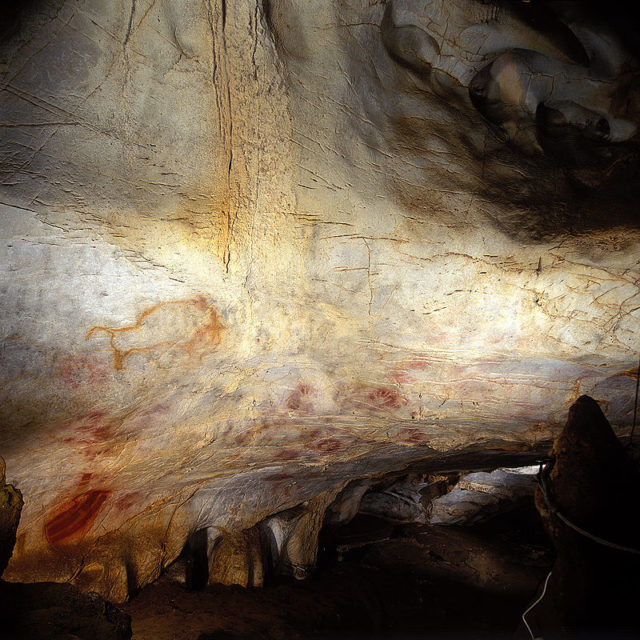
Neanderthals are a separate branch of the hominid species; if this is really their artwork, it could mean they could be classified as human after all. Previous discoveries at Neanderthal sites have discovered things such as beads, pigments, and sculptures that are making a few scientists uncomfortable. For if the Neanderthals had a culture similar to ours, then that would make them just as human as we are.
2.Scottish Swirls
Found in Scotland, the Cochno Stone is a mysterious rock with serious etching done in geometric swirls known as cup and ring marks.
It is not a unique piece as there are many such marked rocks across Europe, but it is one of the best examples of the pattern. The artifact was dug up in 1887 and is 13 meters long by 8 meters wide.
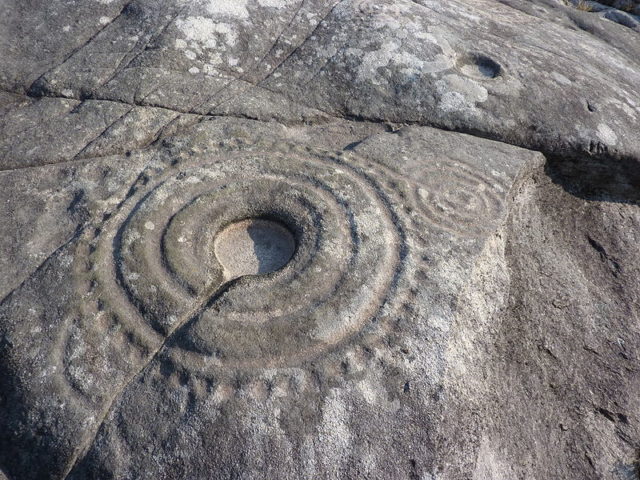
Unfortunately, taking the stone out of its protective earth was a bad idea, and by 1965 the weather and vandals had done considerable damage. The 5,000-year-old stone was reburied to try and preserve what was left of the pattern; it has since then been uncovered and photographed before being returned to its earthy home once more.
1.Higgs Bison and evolution
Sometimes rock art helps out the lab-bound scientists with puzzles about ancient creatures. A perfect example of this is the Higgs Bison which is captured in French and Spanish Ice Age art.
Wall paintings from over 18,000 years ago depict a long-horned and powerfully-built bison that resembles the American bison.
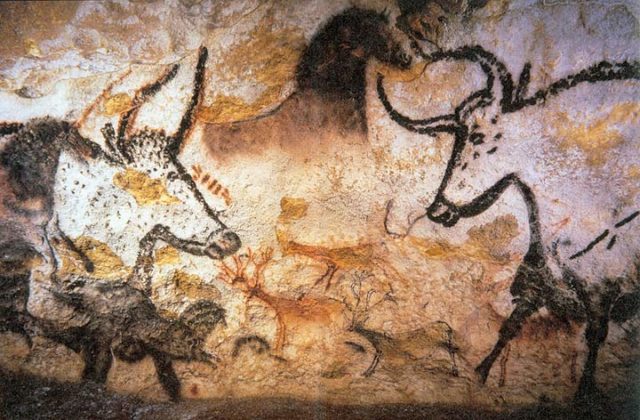
As older art is added to by younger artists, you can see the horns and humps slowly diminish over time until there is a creature that resembles the bison of today.
With this as a prod the scientists have further proven that the bison was a hybrid between aurochs and the Steppe bison, and so an entirely new species was born.
